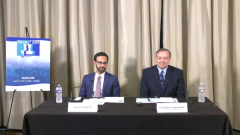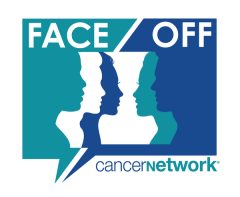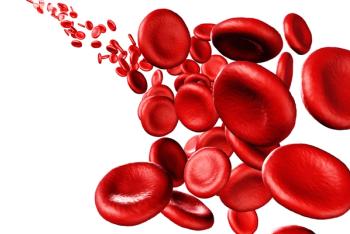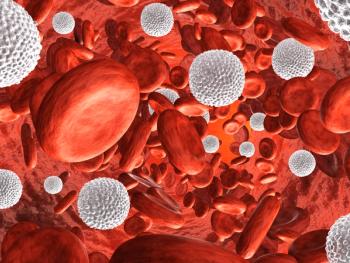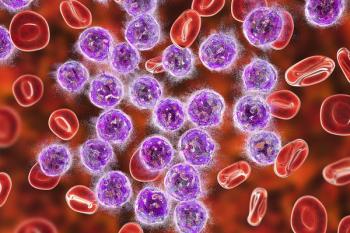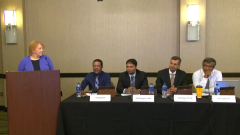
Cross Q&A: Real-World Use of Low-Dose Dasatinib in CML
Following a review of data with low-dose dasatinib in chronic myeloid leukemia, key opinion leaders from the Mayo Clinic and UT Southwestern consider its role in real-world practice.
Episodes in this series

Transcript:
Judy Schreiber, PhD, RN: Thank you very much. Any comments[or] questions?
Prashant Kapoor, MD, FACP: That was a great presentation, Abhishek. Just a couple of questions. One is, if you have a patient who’s in remission, deep remission on 100-mg dose, now do you consider changing it to 50[-mg] routinely?
Abhishek Mangaonkar, MBBS :I do. Actually, if they’re really tolerating [that dose]—the patients, if they’re on that dose for a very long time, then a lot of the patients are reluctant to change in a way. But if there are issues that are happening like myalgias, arthralgias, whatever the TKI [tyrosine kinase inhibitor adverse] effects, then definitely I have no hesitation in lowering the dose. It’s important to remember [that for] a lot of the patients, there are 2 main goals in this disease. Overall survival is obviously the major goal for patients. To date, no study has truly shown an overall survival benefit of any of these second- or third-generation TKIs over imatinib, even after 5years of follow-up. A lot of these patients also have the goal of coming off the TKIs eventually, and that’s the concept of treatment-free remission. It’s always quicker to get to those milestones, to those end points with the second and third generation. A lot of the patients prefer to get there faster so that they can come off it faster. Those are some important points that we consider in these patients.
Prashant Kapoor, MD, FACP: Just a follow-up question to what you had alluded to initially in this study, where only a small proportion, about 9% or 10% of patients, had high-risk Sokal scores at the time of study entry. In real life, what proportion of patients have a high-risk score, and would you consider using the full or 100-mg dose in those patients?
Abhishek Mangaonkar, MBBS: I think it’s hard to give a percentage, at least a very crude estimate is 20% are high risk. I don’t know. Dr [Kebede] Begna, you may have a different number, but I probably would not use the low dose in those patients just because there’s[a] lack of data right now. I think if you look at the NCCN [National Comprehensive Cancer Network] guidelines, imatinib is an option for all these groups, but in NCCN guidelines, they prefer the second and third generation for high-risk patients; they say preferred regimens,and the doses, again, the standard dose, [is]the 100-mg dose for the dasatinib. I probably would not change my practice in those patients.
Kebede Begna, MD: To adhere really [to] risk groups….Most of the risk groups are designed in the early 1980s and 1990s when we [did not]have a lot of TKIs. The variable splenomegaly is based on your physical examination, not ultrasound, not CT scan. The phenotype of patients at that time, 40 years ago and now, [in what percentage] of patients are you able to fill the spleen? So in my practice, I don’t use those scoring systems. Second, CML [chronic myelocytic leukemia]is a poster child for every kind of cancer. As you know, minimal residual disease, treatment-free remission. Now, in the [past] decade or so, the goal of treatment is to achieve cure. The goal is to achieve a major molecular remission. The deeper molecular remission you are in, the less likelihood for the disease to come back. Even if it comes back, you can restart the same kind of TKI. Multiple studies…have shown that if you start with the same kind of TKI, the chance for achieving major molecular remission within [a] matter of months is very high. That’s one. The other important point I think [that] we don’t know is the cost of the medication. I don’t know the cost of 50mgof Sprycel [dasatinib] and 100mg of Sprycel. And if it is 50% lower, if you can get the same goal with less cost for the patient, less cost for the nation, that should be also taken into consideration.
Abhishek Mangaonkar, MBBS: Very good point.
Wilson Gonsalves, MD: Abhishek, I just have one question. I may have missed this in the slide. It looked like the 50 mg was doing better than the 100 mg.[I’m] just trying to understand the rationale; [are there] more dose interruptions with the full 100-mg dose, and that’s why?
Abhishek Mangaonkar, MBBS: [Yes.] I think the [fewer] dose interruptions there were, more patients were able to stay on the same TKI for longer rather than switching TKIs. That was thought to be the main sort of reason why [the lower dose was doing better]. In the paper, they also showed that data basically; that more patients were able to stay on it for a longer time.
Kebede Begna, MD: And this is not head-to-head; this is historical comparison.
Abhishek Mangaonkar, MBBS: Right.
Kebede Begna, MD: Patients who might be on 100 mg may be higher risk; we don’t know about that one. So, you must take this test. But there are a lot of other studies showing that a lower dose, sometimes even 20 mg,[was] as effective as the 50 or 100 mg. Especially [for] those who are in deep molecular remission, I think the dose should be reduced because those [adverse]effects, interstitial lung disease, pulmonary hypertension, pleural effusion, they are not dose dependent as such. It can depend on time dependence. The longer you are on those treatments, the chance for having those [adverse] effects is higher. One pulmonary hypertension can change your view about those treatments. That’s why imatinib with long-term experience without any significant [adverse] effect is still the drug of choice for a lot of CML experts.
Wilson Gonsalves, MD: I was going to say, it’s a little bit of déjà vu from the myeloma world of once-weekly dex[dexamethasone] vs like 4-on-4-off dex.
Kebede Begna, MD: You were using higher dose of dex, yes, at the beginning?
Prashant Kapoor, MD, FACP: We were using at [a higher dose] a few years ago, not anymore. That’s true for bortezomib as well. We were using twice a week for 2out of 3weeks. Now we are using once a week for all practical purposes.
Kebede Begna, MD: Actually, I [want] to comment on the biochemical relapse on myeloma. As you know, APL [acute promyelocytic leukemia], CML, these are important diseases [that]really expand the knowledge we have regarding management of a lot of cancers. So, as you know, when you have molecular relapse, we do from peripheral blood, both PML-RARA for APL and BCR-ABL for AML [acute myeloid leukemia]. Then whenever they have a molecular relapse, you restart early. Hopefully, you may use that analogy to start patients with [biochemical] relapse. When I was treating some patients with myeloma, smoldering myeloma, I don’t touch them. Still now you are treating or having a number of clinical trials for smoldering myeloma, is that correct?
Prashant Kapoor, MD, FACP: Yes.
Adeel Khan, MD, MPH, MS: [These are] fascinating data. It’s such a service to patients to try to be able to get away with less drug but still offer similar efficacy. Since there [are] data for this, how would you compare real-world use of dasatinib to the other second-generation TKI, nilotinib? Are you more inclined to [use] dasatinib because of this, or is it patient specific?
Abhishek Mangaonkar, MBBS: There’s one study that has looked at that. I think bosutinib was compared with nilotinib in a random [study], and there was no essential difference in the response rates. I think what matters is the adverse effect profile. There are certain unique adverse effects and there are patient characteristics that come into play there. The dasatinib…is [better]if the patient does not have any issues with the lungs, pulmonary hypertension, those kinds of things. If vascular, cardiovascular risk factors are not a problem, then I would favor dasatinib. Now, nilotinib also has some problems with arrhythmias and those things, so it plays into that. Bosutinib has more GI [gastrointestinal adverse] effects. Those are some important things that we look at the baseline characteristics of patients before choosing them. There’s not a right answer there.
Kebede Begna, MD: In addition…physicians have different takes on the different studies. So actually, we did a survey of male physicians. As you know, we have different practices in Arizona, Florida, and here. There are a certain number of myeloid physicians. It was done in 2015; actually, we reported it in American Journal of Hematology, among 12 or so male physicians, about 9 of them chose imatinib as a first line. There are some still choosing second-generation TKIs, but among the second-generation TKIs, most of the practicing physicians at the Mayo Clinic, I can say, choose dasatinib in comparison [with] nilotinib or bosutinib.
Transcript edited for clarity.
Newsletter
Stay up to date on recent advances in the multidisciplinary approach to cancer.


